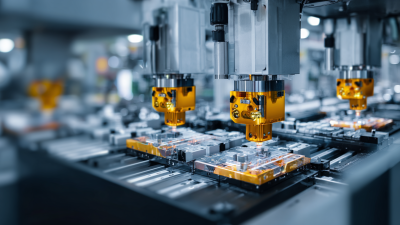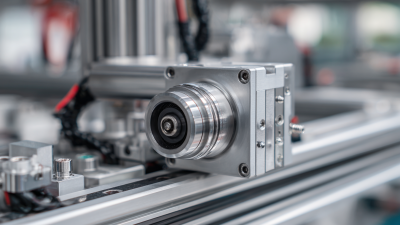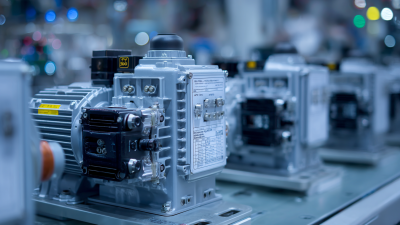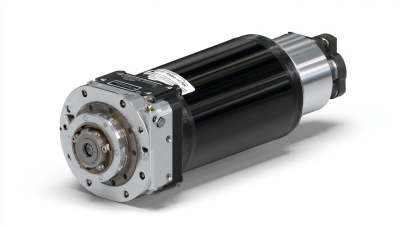Exploring the Future of Robotics: How Servo Motor Drivers Transform Automation
In the rapidly evolving landscape of automation and robotics, the role of the servo motor driver cannot be overstated. This essential component has become a cornerstone in the design and function of modern robotic systems, enabling precise control of motion and enhancing overall performance. As industries seek to optimize efficiency and accuracy, understanding how servo motor drivers work and their impact on automation is crucial. From industrial machinery to consumer robots, servo motor drivers facilitate complex movements and allow for greater flexibility in design, paving the way for innovative applications. This exploration aims to unveil the transformative influence of servo motor drivers on the future of robotics, elucidating how they empower automation and drive technological advancements across various sectors. Join us as we dive into the mechanics, advantages, and future potential of servo motor drivers in reshaping the automation landscape.

The Role of Servo Motor Drivers in Modern Robotics Automation
The Role of Servo Motor Drivers in Modern Robotics Automation
In the rapidly evolving field of robotics, servo motor drivers play a critical role in enhancing the precision and efficiency of automation processes. According to a recent report from MarketsandMarkets, the global servo motor market is projected to reach USD 10.32 billion by 2026, growing at a CAGR of 5.9% from 2021, largely driven by industries that embrace automation and robotics technologies.
Servo motor drivers not only enable accurate control of motors but also facilitate real-time feedback mechanisms, crucial for tasks ranging from assembly lines to robotic surgeries.
The integration of advanced servo motor drivers in robotics has significantly improved motion control systems. For instance, a study by ResearchAndMarkets indicates that the demand for servo motor drivers in industrial automation is expected to witness substantial growth as manufacturers seek to streamline operations and enhance quality control. These drivers enable quick response times and high torque capabilities, ensuring that robotic systems can perform complex tasks with remarkable efficiency and reliability. As industries continue to adopt these technologies, the importance of servo motor drivers in shaping the future of automation cannot be overstated.
Key Features of Advanced Servo Motor Drivers You Should Know
As the landscape of automation evolves, advanced servo motor drivers are at the forefront of this transformation, significantly impacting various industries. One of the standout features of these drivers is their ability to enhance precision and performance in robotic applications. By enabling fine control over motion, position, and speed, advanced servo motor drivers are empowering systems to operate with remarkable accuracy. This capability is crucial in sectors such as manufacturing, where even minor deviations can lead to substantial inefficiencies and costs.
Market insights reveal the substantial growth potential of the digital servo motors and drives segment. According to a recent global market analysis report, the sector is projected to reach USD 18.5 billion by 2035, with a compound annual growth rate (CAGR) of 6.7% during the forecast period. This upward trajectory highlights the increasing adoption of automation technologies across various industries, driven by the need for improved efficiency and productivity. Moreover, advanced features such as integrated feedback control and energy efficiency are making servo motor drivers an essential component in modern automated systems, further propelling market growth.
Exploring the Future of Robotics: How Servo Motor Drivers Transform Automation
| Feature | Description | Benefits |
|---|---|---|
| High Precision Control | Advanced servo motor drivers provide highly accurate position control. | Enhanced performance in robotic applications requiring precise movements. |
| Real-time Feedback | Integrated sensors offer continuous monitoring and adjustments. | Improved responsiveness and reliability in dynamic environments. |
| Compact Design | Small form factor allows for integration into tight spaces. | Flexibility in design and easier installation in various applications. |
| Energy Efficiency | Optimized power usage reduces energy consumption during operation. | Lower operational costs and increased sustainability. |
| Versatile Communication Protocols | Support for multiple interfaces such as CAN, RS232, and Ethernet. | Seamless integration with various control systems and IoT devices. |
Impact of Servo Motor Technology on Industry 4.0 and Beyond
The advent of Industry 4.0 has heralded a new era in automation, where the integration of advanced technologies like
servo motor drivers plays a pivotal role.
Servo motors offer precision, speed, and advanced control capabilities, essential for modern manufacturing processes.
Their ability to achieve high torque at low speeds allows for intricate tasks, such as assembly and robotic handling, to be performed with superior efficiency.
As industries increasingly adopt smart factories, servo motor technology becomes integral in enabling
real-time feedback and adaptive control, significantly enhancing production flexibility.
Moreover, the synergy between servo motor drivers and IoT devices is redefining operational paradigms. The real-time data generated by servo systems allows for predictive maintenance, minimizing downtime and maximizing productivity. This technology not only optimizes existing processes but also facilitates the creation of autonomous systems that can learn and adapt over time. As the landscape of automation evolves, the impact of servo motor technology extends beyond traditional manufacturing, influencing sectors such as logistics, healthcare, and even transportation, thereby solidifying its role in shaping the future of Industry 4.0 and beyond.
Tips for Selecting the Right Servo Motor Driver for Your Project
When embarking on robotics projects, particularly those involving automation, selecting the right servo motor driver is crucial to ensure optimal performance and efficiency. Servo motor drivers play a significant role in controlling the motion of robotic limbs and machinery, making them essential components for your automation tasks. With ongoing advancements in technology, various platforms and systems offer unique features tailored to specific applications.
**Tips for Selecting the Right Servo Motor Driver for Your Project:**
Firstly, consider the power requirements of your robotic system. Analyze the specifications of the servo motors you plan to use, ensuring that the driver can accommodate voltage and current requirements. Additionally, evaluation of the driver’s performance in dynamic scenarios is vital; it should smoothly handle varying loads and provide precise control for intricate movements. Finally, explore compatibility with other components of your system, such as controls and sensors, to ensure seamless integration and operation within your project.
As you delve into building or upgrading robotic systems, it's essential to remain informed about the latest offerings in servo motor drivers. For instance, newer systems are designed with modular capabilities that enhance flexibility for high-performance motion control applications. This can considerably streamline the development process, allowing for quicker iterations and improved overall design efficiency in robotic solutions.
Future Trends in Robotics: Innovations in Servo Motor Driver Design
The landscape of robotics is continuously evolving, with servo motor drivers at the forefront of this transformation. According to a recent report by MarketsandMarkets, the global servo motors market is projected to reach $8.8 billion by 2025, growing at a CAGR of 7.8% from 2020 to 2025. This growth is fueled by innovations in servo motor driver design, which enhance performance and efficiency in automated systems. Advanced features such as feedback control and improved response times allow for more precise movements in robotics, significantly impacting sectors like manufacturing and logistics.
Recent developments in servo driver technologies also emphasize miniaturization and integration capabilities. The introduction of digital servo motor drivers, which leverage embedded intelligence, enables real-time communication and adaptive control strategies. According to a report from Research and Markets, the demand for smart servo motor drivers is expected to rise dramatically, as they offer greater energy efficiency and reduced operational costs. These innovations will not only enhance the functionality of robotic systems but also pave the way for new applications across multiple industries, further cementing the role of servo motor drivers in the future of automation.
Future Trends in Robotics: Innovations in Servo Motor Driver Design
Related Posts
-

Future Innovations in Servo Motor Drivers Shaping Global Industry Trends in 2025
-

Unlocking Efficiency: How Industrial Servo Motors Transform Automation in Manufacturing
-

Exploring 2025 Tech Trends: How to Choose the Best Frameless Motor for Your Business Needs
-

Understanding the Fundamentals of AC Servo Technology: What You Need to Know
-

7 Reasons Why High Torque Motors Are Revolutionizing Industrial Applications
-

Innovative Solutions for Achieving Maximum Efficiency with Best DC Servo Motors
